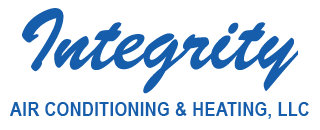Everyone’s always looking to save money on their utility bills, but you should know there’s a way to keep costs down, even when you’re out of the house.
The key is your thermostat. By making the most out of your thermostat, you can structure its daily schedule around your personal preferences. You can create a number of automated temperature settings for when you’re home, away or even when you’re sleeping.
By trying a few of these schedules, you can enjoy comfy temperatures while keeping more money in your pocket. Take a look at a few ways your thermostat doesn’t have to use up all your summer spending money:
While at Home
Whenever you’re at home, you want to enjoy a comfortable temperature. It’s only natural to want your thermostat lower in the summer if you’re indoors to appreciate the cool air.
But the most energy-efficient temperatures for when you’re in your home during the summer is usually between 78 and 80 degrees Fahrenheit. This way, you’ll keep cool while still lowering your monthly energy bill.
While Gone
When setting the temperature for when you are out of the house in summer, the majority of homeowners will set the thermostat higher than you would if you were in the house.
For some homes, you can set the thermostat to higher temperatures like 88 degrees while no one is home before you adjust it back to the sweet spot of 78-80 degrees when you or a family member return. This way, your air conditioning won’t have to work constantly to provide cooling for a bunch of empty rooms.
While Asleep
For a full night’s rest during summer weather, you want a nice cool temperature. A great place to start is between 68-72 degrees Fahrenheit. You won’t have to worry about getting too hot or too cold while you’re trying to sleep.
Other Ways to Use Less Energy:
- Smart thermostat installation: Using a smart thermostat in the summer helps save money on energy costs by automatically adjusting to your lifestyle and personal preferences. It’ll take care of making changes while you are home or sleeping, while allowing it to get a little warmer when no one is home. With models like the Lennox iComfort, you have the ability to remotely access and change the temperature through your smartphone, tablet or laptop. Requesting smart thermostat installation in your Phoenix home is an effortless way to set the correct temperature whether you’re at home or across the country.
- Replace current equipment with a newer HVAC system: A high-efficiency HVAC system is another great option for long-term energy savings. By investing in a more energy-efficient system, your utility bills will be lower because it requires less energy to reach your preferred temperatures. Air conditioning installation in Phoenix is a breeze for experienced professionals like Integrity AC & Heating LLC.
- Stay on top of routine AC maintenance: Investing in or ignoring regular air conditioning maintenance in Phoenix can have a big impact on your monthly energy use. By regularly cleaning the coils, checking for damage and clearing air vents of dust and debris, you may notice your HVAC system perform better during day-to-day use.. More efficient operation reduces strain on important or delicate components and lowers operational costs, resulting in lower energy usage and subsequently, smaller bills.
- Clean or replace the air filter on a regular basis: Regularly changing the air filters in your HVAC system saves money by improving airflow. When filters are clogged with dirt and debris, an AC unit has to work harder, and this greater strain could shorten the system’s life span and result in breakdowns.
- Check if you have enough insulation in the attic: Insulation is one of the key components in any energy-efficient home, securing the hot air outside and the cool air inside over the summer. The North American Insulation Manufacturers Association (NAIMA) offers an official recommendation stating homeowners in souther states should possess at least 13-14 inches of insulation, while colder climates do better with 16-18 inches.
- Inspect your ventilation: Damage to the ventilation is capable of increasing your energy bills much more than 20 percent, plus it can also lead to problems with your water heater, clothes dryer and other appliances to get into the atmosphere of your home. Checking your ductwork for leaks and sealing them can help with both these issues.
- Seal all other leaky spots in your home: Finding and sealing any remaining leaks in your home with caulk, foam sealant or weather-stripping can help keep it cooler on hot summer days. You should also check for any gaps around windows, doors and even outdoor fixtures. Devoting time and effort to sealing leaks now can help you save a lot over time.


